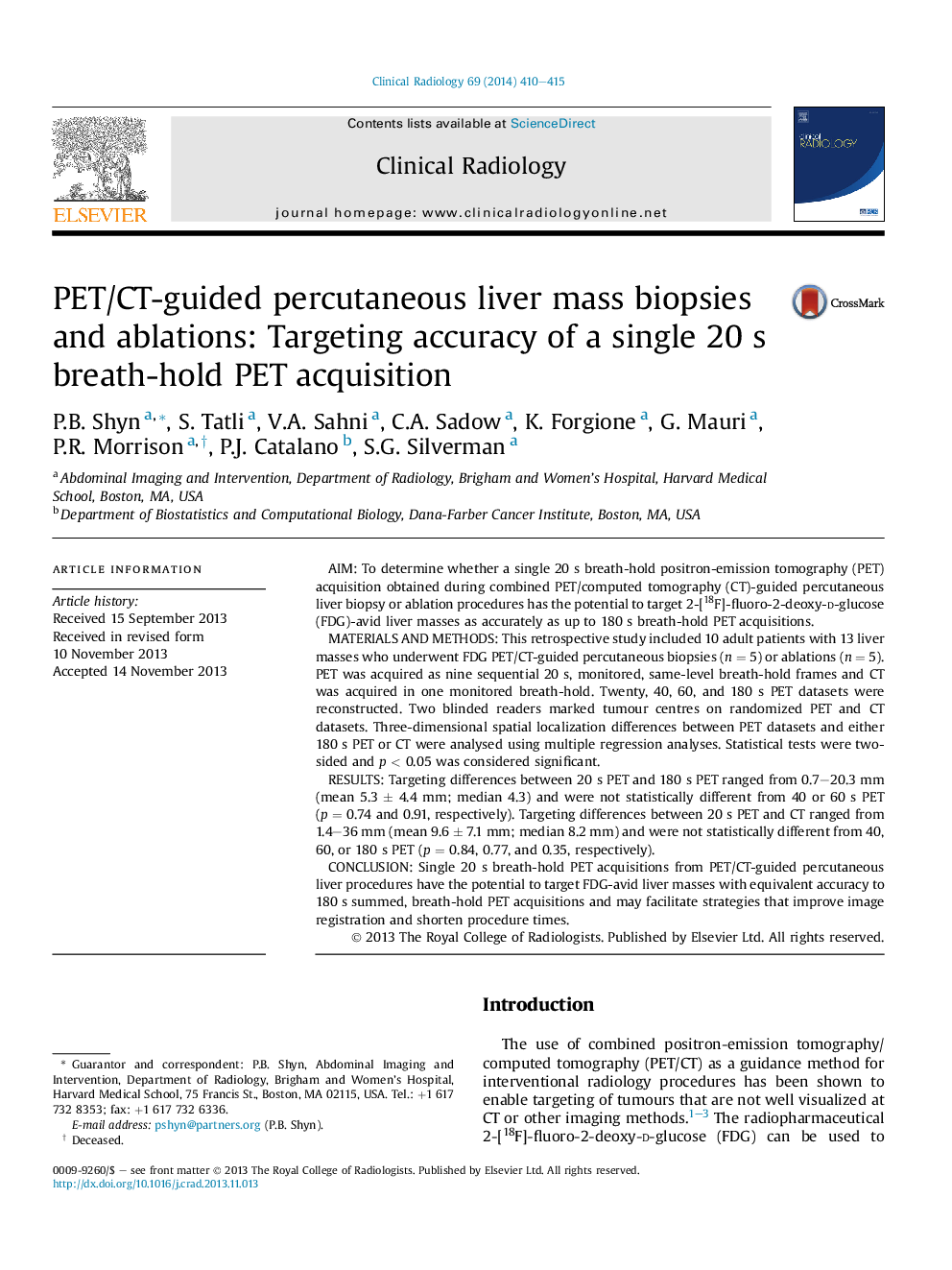| Article ID | Journal | Published Year | Pages | File Type |
|---|---|---|---|---|
| 3981631 | Clinical Radiology | 2014 | 6 Pages |
AimTo determine whether a single 20 s breath-hold positron-emission tomography (PET) acquisition obtained during combined PET/computed tomography (CT)-guided percutaneous liver biopsy or ablation procedures has the potential to target 2-[18F]-fluoro-2-deoxy-d-glucose (FDG)-avid liver masses as accurately as up to 180 s breath-hold PET acquisitions.Materials and methodsThis retrospective study included 10 adult patients with 13 liver masses who underwent FDG PET/CT-guided percutaneous biopsies (n = 5) or ablations (n = 5). PET was acquired as nine sequential 20 s, monitored, same-level breath-hold frames and CT was acquired in one monitored breath-hold. Twenty, 40, 60, and 180 s PET datasets were reconstructed. Two blinded readers marked tumour centres on randomized PET and CT datasets. Three-dimensional spatial localization differences between PET datasets and either 180 s PET or CT were analysed using multiple regression analyses. Statistical tests were two-sided and p < 0.05 was considered significant.ResultsTargeting differences between 20 s PET and 180 s PET ranged from 0.7–20.3 mm (mean 5.3 ± 4.4 mm; median 4.3) and were not statistically different from 40 or 60 s PET (p = 0.74 and 0.91, respectively). Targeting differences between 20 s PET and CT ranged from 1.4–36 mm (mean 9.6 ± 7.1 mm; median 8.2 mm) and were not statistically different from 40, 60, or 180 s PET (p = 0.84, 0.77, and 0.35, respectively).ConclusionSingle 20 s breath-hold PET acquisitions from PET/CT-guided percutaneous liver procedures have the potential to target FDG-avid liver masses with equivalent accuracy to 180 s summed, breath-hold PET acquisitions and may facilitate strategies that improve image registration and shorten procedure times.
